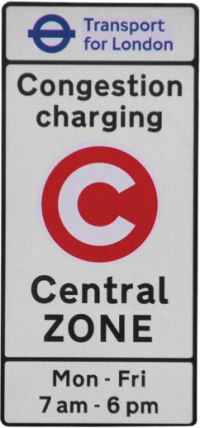From: Tampa Bay Guardian
Posted by: Editor Tom Rask
TBARTA, the Tampa Bay Area Regional Transportation Agency, operates a little known commuter van pool program involving about 100 vans. It’s a form of transit that costs much less per passenger mile than other forms of transit, but there is little evidence that it reduces traffic congestion.
All transit agencies that receive funds from the Federal Transit Administration (FTA) are required to submit data to the National Transit Database (NTD). The FTA then creates one-page profiles for each agency from this data. The latest available profiles are from 2014 – they show operating costs for fixed route buses are 83 cents per passenger mile at HART (Hillsborough), and 81 cents per passenger mile at PSTA (Pinellas).

In contrast, TBARTA’s van pool program costs 15 cents per passenger mile, 82% less than the traditional fixed route bus lines at HART and PSTA mentioned above.
In addition, because TBARTA leases their vehicles rather than buys then, the 15 cents per mile includes the cost of the vans themselves. HART’s and PSTA’s numbers exclude the cost of purchasing the buses, and any other capital costs.
90% of the 100 vans have a capacity of 7 or 8 passengers, but four of them are 12 or 15 passenger vans. Michael Case, principal planner and project manager at TBARTA, says that “most of our vanpoolers travel during peak hours (7:30 AM to 9:30 AM, and 3:30 PM to 7:30 PM), though a few do have late shifts.”
However, the portion of the cost borne by taxpayers remains high: 65% of the program costs is paid for out of public funds. TBARTA essentially oversees a for-profit program run by vRide/Enterprise. Our review of vRide’s insurance coverage, their periodic review of state driving records, or their audit for unapproved van use turned up no obvious problems.
“Van pooling in general is the most cost effective transit program of any transit agency,” Randal O’Toole told the Guardian. O’Toole is a senior fellow at the Cato Institute, and is also their top transportation policy analyst. “Van pools move people for less money using less energy than any other form of transit.”

Nationwide in 2015, vanpooling revenues covered 78 percent of operating costs, compared with 35 percent for transit in general. They are also more energy efficient: vanpools consumed 1,421 BTUs of energy per passenger mile, compared with 3,170 for transit in general. TBARTA’s vanpooling used 1,461 BTUs per passenger mile and fares covered 68 percent of operating costs.
However, O’Toole doesn’t think that TBARTA’s van pool program is likely to reduce congestion at peak travel times. Doing so is crucial in maximizing the return on tax dollars.
“A region like Tampa Bay probably has more than 10 million motor vehicle trips per weekday,” says O’Toole. “Reducing that number by a few hundred vanpool trips per day isn’t going to have much of an effect, especially since some of those people might have carpooled or taken transit anyway.”
Case says that rigorously proving reduced congestion is hard to do. “We look more at the impact in certain corridors, and less at the systemwide impact,” said Case. “For example, approximately 35 of our van pools go to the James A. Haley Veteran’s Hospital on Bruce B Downs Boulevard. If we can reduce the traffic on Bruce B Downs at peak times by 120-150 vehicles, then that has an impact”.

The average daily traffic (ADT) southbound on Bruce B. Downs Boulevard is 24,602 vehicles per day. The peak hour volume is on average 8 percent of the total ADT, which equals 1,968 vehicles. TBARTA claims that the 35 vans that travel to and from the site daily, with an average of 5 occupants, reduce the peak period vehicle count on that corridor by 8.8 percent.
Others say that reduction is number peak period vehicle count is lower, around 5% or less. Critics say that in the absence of van, each van passenger doesn’t necessarily equal one more car on the road and that not all pools travel during the peak traffic hour.
According to the one-page vanpool program summary provided by TBARTA, the cost of service delivery of the vanpool program is $0.78 per revenue mile. The average per revenue mile cost for transit service in Tampa Bay is $5.14. There are federal pre-tax benefits available at $255 per month, per rider.
Most of the vans used in the vanpool program are 7-passenger Chevrolet Traverse vehicles (picture below). The average vehicle occupancy in the program in January was 60%, which means that on a typical day, there are four people in a typical van. That means 3 people were not on the road in other vehicles.

Readers who have an interest in participating in the TBARTA vanpool program can register their interest online. TBARTA also has a carpool program that helps connect you with others. Case said that their carpool program has more participants than their vanpool program.
An apples-to-apples comparison between van pools and transit buses can only go so far. Vanpoolers live at least 15 miles away from their place of employment, sometimes over 50 miles away. For the majority of them, bus transit is not an option. In contrast, the typical transit trip length in TBARTA’s service region is approximately5 miles (12 miles for express). For vanpools, it’s approximately 33 miles.
For vanpools, the sole purpose is commuting to work, and most trips originate from a home, whereas not all bus transit trips originate or end at a home or place of employment. Local ridership surveys show that less than half of trips are work commutes. The other trips are for shopping, social, recreation, and school.
The key public policy question underlying these programs is: how is traffic congestion addressed most cost-effectively? O’Toole is a long-time advocate of a vehicle-mile fee system in which “users pay for just the roads they use, when they use them.” Under this system, gas taxes would be phased out and the new system implemented in a revenue-neutral fashion.
 The “when they use them” portion means use of so-called congestion pricing. When a road reaches max capacity, the vehicle throughput per lane mil drops dramatically, resulting in stop-and-go traffic. With congestion pricing, the price would increase sharply as peak road capacity is approached, thereby discouraging drivers from driving and maintaining high traffic volumes.
The “when they use them” portion means use of so-called congestion pricing. When a road reaches max capacity, the vehicle throughput per lane mil drops dramatically, resulting in stop-and-go traffic. With congestion pricing, the price would increase sharply as peak road capacity is approached, thereby discouraging drivers from driving and maintaining high traffic volumes.
“Congestion pricing is the only real solution to traffic congestion,” O’Toole told the Guardian. He referenced his aforementioned 2012 policy analysis paper which he said explains the issues in detail. “I know congestion pricing is very unpopular, but someone has to advocate for it because everything else is mere window dressing.”
The facts on the ground in San Francisco seem to support O’Toole. A 2013 study by the San Francisco County Transportation Authority found that congestion pricing in the eastern portion of downtown San Francisco would reduce vehicle delays by 21%, reduce pedestrian accidents by 12% and improve transit speed by 20-25% . However, the plan has not been implemented yet, most likely because it is opposed by 76% of voters in the city.
Are the TBARTA vanpool and carpool programs good use of tax dollars for reducing Tampa Bay area traffic congestion? Would you support congestion pricing?
As always, the Guardian reports and the readers decide. Please like our Facebook page to find out when we publish new stories.
Cross Posted with
permission from: Tampa Bay Guardian This post is contributed by the Tampa Bay Guardian. The views
expressed in this post are the author's.

No comments:
Post a Comment